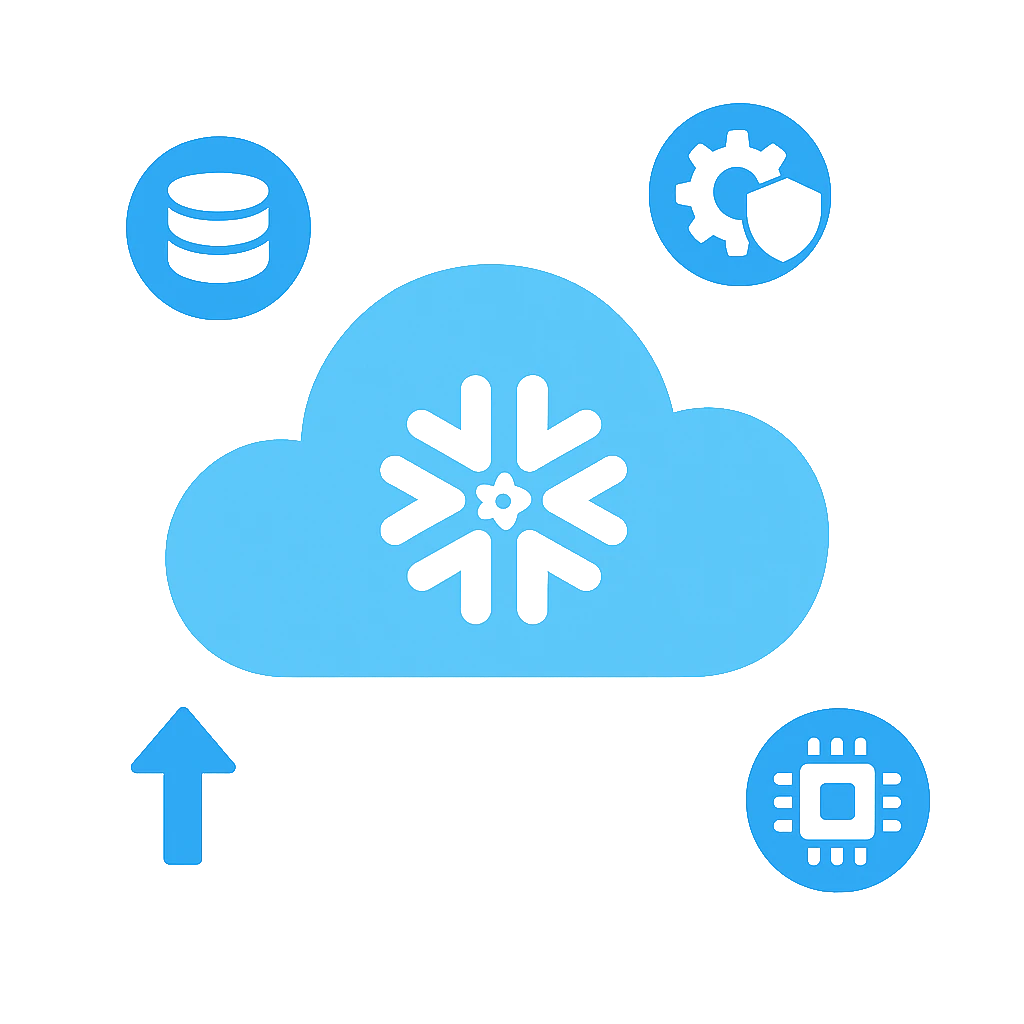
What is Snowflake & when to use it
Written by Javier Esteban · 3 September 2025
Snowflake is a cloud-based data platform designed for large-scale storage, processing, and analytics. Unlike traditional databases, Snowflake was built natively for the cloud and separates storage from compute, giving it unique flexibility and scalability.
What is Snowflake?
At its core, Snowflake lets organisations:
- Store structured, semi-structured (JSON, Avro, Parquet) and unstructured data.
- Query massive datasets efficiently.
- Share data securely with internal and external users.
- Scale compute resources on demand, paying only for what you use.
Think of Snowflake as a data warehouse in the cloud—more flexible and powerful than traditional solutions like Oracle, SQL Server, or Teradata.
Snowflake Architecture
- Database Storage Layer
All data is stored in cloud storage (AWS S3, Azure Blob Storage, or Google Cloud Storage). Snowflake automatically compresses and optimises storage.
- Compute Layer (Virtual Warehouses)
Compute resources are called virtual warehouses. Each can scale independently, run queries in isolation, and allow multiple teams to work on the same data without bottlenecks.
- Cloud Services Layer
Manages metadata, query parsing, optimisation, and security.
Strengths
- Separation of Storage & Compute – Scale them independently. Ideal when data is huge but compute demand varies.
- Elasticity – Warehouses can auto-scale or pause when idle to save cost.
- Support for Semi-Structured Data – Query JSON, Avro, Parquet directly.
- Zero Maintenance – No manual indexing or patching.
- Secure Data Sharing – Share data across accounts seamlessly.
- Time Travel – Query past data states (up to 90 days).
- Multi-Cloud – Works on AWS, Azure and GCP.
Weaknesses
- Cost of Compute – Billed per second per warehouse; heavy queries get expensive.
- Not for OLTP – Optimised for analytics, not high-frequency inserts/updates/deletes.
- Limited Control – Less tuning compared to traditional databases.
When to Use Snowflake vs AWS Native Services
| Use Case / Scenario | Prefer Snowflake | Prefer AWS Native |
|---|---|---|
| Analytics-heavy workloads | ✅ Handles at scale with caching & concurrency | ❌ Redshift may need more tuning |
| Semi-structured data | ✅ Query JSON/Parquet directly | ❌ Usually requires preprocessing |
| Concurrent multi-team queries | ✅ Multi-cluster prevents bottlenecks | ❌ Redshift/Athena less flexible |
| Transactional (OLTP) | ❌ Not optimised | ✅ RDS, Aurora, DynamoDB better |
| Infrequent cost-sensitive queries | ❌ Compute may be expensive | ✅ Athena pay-per-query |
| Real-time streaming | ❌ Near real-time only | ✅ Kinesis, DynamoDB Streams |
| Deep AWS integration | ❌ Needs connectors | ✅ Native services integrate directly |
| Data sharing | ✅ Built-in secure sharing | ❌ Complex setup |
| Time travel | ✅ Query past states | ❌ Snapshots/backups needed |
| Rapid scaling | ✅ Auto scale instantly | ⚠ Redshift needs resizing |
Conclusion
Snowflake excels at cloud-scale analytics with elasticity, semi-structured data support and secure data sharing.
But if your workload is transactional, deeply tied to AWS services, or highly cost-sensitive, AWS native databases may be a better fit.
Need guidance on whether Snowflake or AWS best suits your use case? Contact Crow Tech’s experts—we’ll help you choose the right architecture.
Not quite ready for a consultation?
Drop us a message, and we'll respond with the information you're looking for.